Tag Archives: California
Sonoma County crabbers face new limits as state restricts season for 7th year — but can keep working
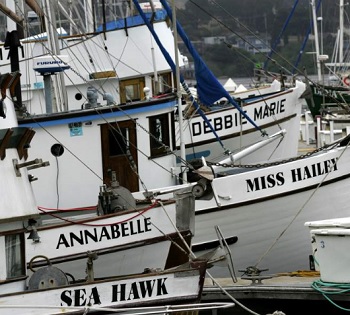 For the seventh year in a row, California officials are limiting commercial Dungeness crab fishing along the coast — including off Sonoma County — to protect humpback whales from becoming entangled in fishing gear. Dick Ogg, a commercial fisherman who represents Bodega Bay in the Dungeness Crab Gear Working Group, said the decision was difficult but reflects a fair compromise between conservation and livelihoods. “It is an awkward situation, but every chance that we can get to help guys be able to continue to fish a little bit safely, we’re gonna take it,” he said. “We have made good logical decisions based on data.” Ogg said most crabbers are relieved to be able to keep working — even in a limited capacity. more, >>CLICK TO READ<< 14:49
For the seventh year in a row, California officials are limiting commercial Dungeness crab fishing along the coast — including off Sonoma County — to protect humpback whales from becoming entangled in fishing gear. Dick Ogg, a commercial fisherman who represents Bodega Bay in the Dungeness Crab Gear Working Group, said the decision was difficult but reflects a fair compromise between conservation and livelihoods. “It is an awkward situation, but every chance that we can get to help guys be able to continue to fish a little bit safely, we’re gonna take it,” he said. “We have made good logical decisions based on data.” Ogg said most crabbers are relieved to be able to keep working — even in a limited capacity. more, >>CLICK TO READ<< 14:49
Boat tours and ash scatterings help beleaguered California salmon fleet stay afloat
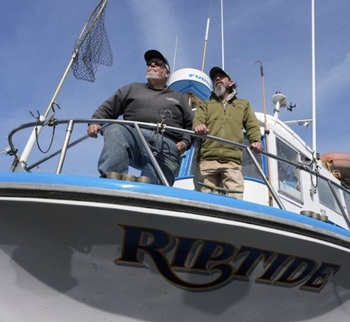 “The bills keep going, whether I’ve got a fishery or not,” said Smith, who runs Riptide Sportfishing in Half Moon Bay, California. “There’s no season on when people die.” California’s sport and commercial fishermen have been walloped by two years of salmon closures and are bracing for a potential third, which they blame on a years-earlier drought and state and federal water management policies they say have made it tough for the species to thrive. The closures have taken a toll on people’s livelihoods in coastal communities where salmon, fishermen say, is a special fish. “We are people that are hardworking and it’s our jobs on the line,” said Sarah Bates, a commercial fishing captain in San Francisco. She said local markets have been devastated by the salmon closures and Bay Area restaurants aren’t snapping up halibut or other catch as they did salmon. more, >>CLICK TO READ<< 06:36
“The bills keep going, whether I’ve got a fishery or not,” said Smith, who runs Riptide Sportfishing in Half Moon Bay, California. “There’s no season on when people die.” California’s sport and commercial fishermen have been walloped by two years of salmon closures and are bracing for a potential third, which they blame on a years-earlier drought and state and federal water management policies they say have made it tough for the species to thrive. The closures have taken a toll on people’s livelihoods in coastal communities where salmon, fishermen say, is a special fish. “We are people that are hardworking and it’s our jobs on the line,” said Sarah Bates, a commercial fishing captain in San Francisco. She said local markets have been devastated by the salmon closures and Bay Area restaurants aren’t snapping up halibut or other catch as they did salmon. more, >>CLICK TO READ<< 06:36
Mass Layoffs at Companies Working on Humboldt Offshore Wind Projects; At Least Some Local People Laid Off
 The future of Humboldt County’s offshore wind industry appears increasingly uncertain following mass layoffs at RWE and Vineyard Offshore, the multinational energy companies leading efforts to develop commercial-scale floating wind farms on the North Coast. The job cuts come in response to widespread market uncertainty following President Donald Trump’s efforts to ban offshore wind development in the United States. In a regulatory filing submitted last week, RWE Offshore Wind Services, LLC confirmed its plans to cut dozens of jobs in its U.S. offshore wind division. Lots of links. more, >>CLICK TO READ<< 11:38
The future of Humboldt County’s offshore wind industry appears increasingly uncertain following mass layoffs at RWE and Vineyard Offshore, the multinational energy companies leading efforts to develop commercial-scale floating wind farms on the North Coast. The job cuts come in response to widespread market uncertainty following President Donald Trump’s efforts to ban offshore wind development in the United States. In a regulatory filing submitted last week, RWE Offshore Wind Services, LLC confirmed its plans to cut dozens of jobs in its U.S. offshore wind division. Lots of links. more, >>CLICK TO READ<< 11:38

Low salmon numbers in California could prompt shutdown of fishing for a record third straight year
California’s salmon population has declined so severely over the last several years that regulators canceled the fishing season in 2023 and again in 2024. This year, state estimates show the number of Chinook salmon is still so low that fishing could again be prohibited — or if not, sharply limited — to help fish stocks recover. “A lot of the guys right now are basically doing land jobs because the fishery has just been devastated,” said George Jue, a commercial fisherman at Pillar Point Harbor in Half Moon Bay. Even as many fishing boats have sat idle in the harbor lately, Jue and a group of other fishermen have been busy hauling in traps filled with crabs. Once that season is over, Jue said, he expects little or no salmon fishing this year. “This harbor is going to be dead.” more, >>CLICK TO READ<< 08:50
There’s a Fish Market Splashing into Eureka
 Something fishy is moving from the Woodley Island Marina’s docks across the bay to Eureka’s Madaket Plaza, where Humboldt County will have its first fisher’s market, starting in May or June. Ashley Vellis, owner of Ashley’s Seafood, has been brewing up the idea of a local fish market since late 2019 and is now partnering with the North Coast Grower’s Association to organize it, currently working on fundraising to make the new addition to Eureka’s waterfront a reality. Taking inspiration from dockside markets in Santa Barbara, San Diego and San Francisco, Vellis says that she wants to make it more accessible for people to purchase seafood directly from the source. The vision is that local fishers will have stalls to sell their latest and freshest catch. more, >>CLICK TO READ<< 12:25
Something fishy is moving from the Woodley Island Marina’s docks across the bay to Eureka’s Madaket Plaza, where Humboldt County will have its first fisher’s market, starting in May or June. Ashley Vellis, owner of Ashley’s Seafood, has been brewing up the idea of a local fish market since late 2019 and is now partnering with the North Coast Grower’s Association to organize it, currently working on fundraising to make the new addition to Eureka’s waterfront a reality. Taking inspiration from dockside markets in Santa Barbara, San Diego and San Francisco, Vellis says that she wants to make it more accessible for people to purchase seafood directly from the source. The vision is that local fishers will have stalls to sell their latest and freshest catch. more, >>CLICK TO READ<< 12:25
Grounded fishing boat removed from Salmon Creek beach after nearly a decade
 In the nine years since the F/V Verna A II ran ashore south of Salmon Creek on the Sonoma Coast, the beached vessel has become part of the landscape, its decaying hull disappearing and reemerging out from the sand and surf. On Tuesday, however, three excavators fought 16-foot surf to finally drag what was left of the rusted fishing boat out of the sand once and for all. The effort, spearheaded by California State Parks, the National Marine Sanctuary Foundation and the Greater Farrallones and Cordell Bank National Marine Sanctuaries, was finally made possible with funding from the Biden-era Bipartisan Infrastructure Law through the NOAA Marine Debris Program. Video, Photos, more, >>CLICK TO READ<< 07:12
In the nine years since the F/V Verna A II ran ashore south of Salmon Creek on the Sonoma Coast, the beached vessel has become part of the landscape, its decaying hull disappearing and reemerging out from the sand and surf. On Tuesday, however, three excavators fought 16-foot surf to finally drag what was left of the rusted fishing boat out of the sand once and for all. The effort, spearheaded by California State Parks, the National Marine Sanctuary Foundation and the Greater Farrallones and Cordell Bank National Marine Sanctuaries, was finally made possible with funding from the Biden-era Bipartisan Infrastructure Law through the NOAA Marine Debris Program. Video, Photos, more, >>CLICK TO READ<< 07:12
California Fish and Game Commission approve emergency regulations for coonstripe shrimp fishery, EFP to test longlining gear
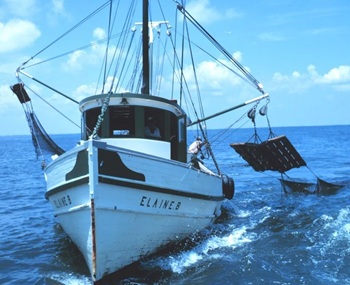 The California Fish and Game Commission announced the adoption of emergency regulations for the commercial coonstripe shrimp fishery. In addition, the CFGC also announced the approval of an experimental fishing permit (EFP) to test longlining gear in the Dungeness crab fishery, among other action affecting California’s natural resources during their February 12 and 13 meetings in Sacramento. Officials say that the emergency regulations were adopted for the commercial coonstripe shrimp (Pandalus danae) fishery in order to reduce the risk of whale entanglement in the fishing gear. more, >>CLICK TO READ<< 06:30
The California Fish and Game Commission announced the adoption of emergency regulations for the commercial coonstripe shrimp fishery. In addition, the CFGC also announced the approval of an experimental fishing permit (EFP) to test longlining gear in the Dungeness crab fishery, among other action affecting California’s natural resources during their February 12 and 13 meetings in Sacramento. Officials say that the emergency regulations were adopted for the commercial coonstripe shrimp (Pandalus danae) fishery in order to reduce the risk of whale entanglement in the fishing gear. more, >>CLICK TO READ<< 06:30

California loves Dungeness crab. But concerns over whale safety have put the industry in peril
The Dungeness crab season had opened just a few weeks earlier, two months behind schedule, and was off to a slow start. “We’re working very hard to basically get nothing,” said Ogg. Early on a Thursday in late January, Ogg readied his 54-foot fiberglass boat, the Karen Jeanne, for a 16-hour day of hauling 200 crab pots. It was barely 4:30 a.m. at the Spud Point Marina, and Ogg’s crew, Bradlee Titus, 34, and Axel Bjorklund, 22, both multi-generational fishermen, prepared the deck by washing equipment, filling water buckets and packing jars with bait — a stinky, oily mashup of mackerel and squid. At the helm, Ogg tracked water currents and the weather forecast as he moved the boat out of Bodega Bay, past Point Reyes toward the Farallon Islands and San Francisco skyline. Photos, more, >>CLICK TO READ<< 07:09
Low stock numbers usher in a ‘devastating’ Dungeness crab season
 One month after the Dungeness crab season opened on the Central Coast, Santa Cruz fishers are grappling with an extremely low number of crabs. “It’s devastating,” said fisher Valerie Phillips, who splits her time fishing out of Santa Cruz and Half Moon Bay harbors. She said she and her crew, which includes her husband, father and a crew member, have caught only about a third of what they would normally catch in a season. “We’re talking about pulling the pots already. We’re probably going to switch to our next fishery.” “It’s a down year up and down the coast, even in Oregon,” said Tim Obert, a Santa Cruz-based fisher with more than 25 years of experience. “In the Santa Cruz area and Monterey Bay, there’s almost nothing.” Photos, more, >>CLICK TO READ<< 09:02
One month after the Dungeness crab season opened on the Central Coast, Santa Cruz fishers are grappling with an extremely low number of crabs. “It’s devastating,” said fisher Valerie Phillips, who splits her time fishing out of Santa Cruz and Half Moon Bay harbors. She said she and her crew, which includes her husband, father and a crew member, have caught only about a third of what they would normally catch in a season. “We’re talking about pulling the pots already. We’re probably going to switch to our next fishery.” “It’s a down year up and down the coast, even in Oregon,” said Tim Obert, a Santa Cruz-based fisher with more than 25 years of experience. “In the Santa Cruz area and Monterey Bay, there’s almost nothing.” Photos, more, >>CLICK TO READ<< 09:02
Fishers Make the Most of a Better Crab Season
 The rain is misting over Woodley Island Marina’s Dock B, where the F/V Jenna Lee is moored. Kristen Pinto, in a bright yellow slicker, pulls three Dungeness crabs from the trickling bin on the deck of the adjacent home-built pontoon boat from which the Pinto family sells to the public as Jenna Lee’s Seafood. “It’s been a little slower,” she says, lifting a half shrug and noting the strained economy and higher price of crab — $8 per pound — have kept some away. “They’re a nice size and all, but it adds up. A nice size crab can be $20.” The jump in price from last year has been a boon for crab fishers who’ve been stuck selling their hard-won catches for less and less over shortened seasons in recent years. more, >>CLICK TO READ<< 17:43
The rain is misting over Woodley Island Marina’s Dock B, where the F/V Jenna Lee is moored. Kristen Pinto, in a bright yellow slicker, pulls three Dungeness crabs from the trickling bin on the deck of the adjacent home-built pontoon boat from which the Pinto family sells to the public as Jenna Lee’s Seafood. “It’s been a little slower,” she says, lifting a half shrug and noting the strained economy and higher price of crab — $8 per pound — have kept some away. “They’re a nice size and all, but it adds up. A nice size crab can be $20.” The jump in price from last year has been a boon for crab fishers who’ve been stuck selling their hard-won catches for less and less over shortened seasons in recent years. more, >>CLICK TO READ<< 17:43
Ventura fisherman missing since Wednesday night prompts search effort
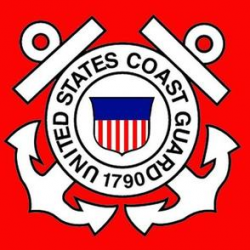 A fisherman from Ventura reported missing Wednesday had not been found as of midday Thursday. His boat was found Wednesday night with no one aboard about 10 miles off the Ventura coast, authorities said. The U.S. Coast Guard was leading the ongoing search for the 71-year-old after he was reported overdue from a fishing trip shortly after 7 p.m. Wednesday, said Coast Guard Public Affairs Specialist Richard Uranga. The Coast Guard found the man’s 40-foot commercial fishing boat just before 9 p.m. Wednesday, Uranga said. Crews towed it to the Ventura Harbor. As of 9 a.m. Friday morning, Ventura Harbormaster John Higgins said he had no update on the search despite continued efforts to search local waters. Photo, more, >>CLICK TO READ<< 14:48
A fisherman from Ventura reported missing Wednesday had not been found as of midday Thursday. His boat was found Wednesday night with no one aboard about 10 miles off the Ventura coast, authorities said. The U.S. Coast Guard was leading the ongoing search for the 71-year-old after he was reported overdue from a fishing trip shortly after 7 p.m. Wednesday, said Coast Guard Public Affairs Specialist Richard Uranga. The Coast Guard found the man’s 40-foot commercial fishing boat just before 9 p.m. Wednesday, Uranga said. Crews towed it to the Ventura Harbor. As of 9 a.m. Friday morning, Ventura Harbormaster John Higgins said he had no update on the search despite continued efforts to search local waters. Photo, more, >>CLICK TO READ<< 14:48
Judge denies crab buyers motion to dismiss crabbers price fixing lawsuit
 A U.S. federal judge of the Northern District of California denied the motion by dozens of crab buyers to dismiss price-fixing claims. The lawsuit follows an earlier suit back in March 2023 with plaintiffs Brand Little and Robin Burns, who accused Pacific Seafood, Washington-based Bornstein Seafood, and other US West Coast Crab companies of allegedly being part of a cartel that artificially suppressed prices paid to fishermen for Dungeness Crab. According to the complaint in the lawsuit, the cartel, allegedly led by Pacific Seafood, suppressed these prices paid to crabbers in California, Oregon, and Washington since the 2015- 2016 crabbing season.Video, more, >>CLICK TO READ<< 10:39
A U.S. federal judge of the Northern District of California denied the motion by dozens of crab buyers to dismiss price-fixing claims. The lawsuit follows an earlier suit back in March 2023 with plaintiffs Brand Little and Robin Burns, who accused Pacific Seafood, Washington-based Bornstein Seafood, and other US West Coast Crab companies of allegedly being part of a cartel that artificially suppressed prices paid to fishermen for Dungeness Crab. According to the complaint in the lawsuit, the cartel, allegedly led by Pacific Seafood, suppressed these prices paid to crabbers in California, Oregon, and Washington since the 2015- 2016 crabbing season.Video, more, >>CLICK TO READ<< 10:39
Researchers Are Finding Ash From Los Angeles Fires 100 Miles Out to Sea
 According to UC San Diego’s Scripps Institution of Oceanography and NOAA Fisheries’ Southwest Fisheries Science Center, billowing smoke from the Palisades, Eaton, and other fires has deposited ash and debris on the ocean’s surface as much as 100 miles from the coast. The crew aboard a NOAA research vessel called the Reuben Lasker was gathering water samples when the fires began. Over the next few days, they collected samples of the ash piling up on the deck of the ship, as well as in the sea. “We’re positioning ourselves to answer the question, ‘What does this mean for West Coast fisheries and the food web that we all depend on?’” said Nicolas Concha-Saiz, NOAA Fisheries’ chief scientist. more, >>CLICK TO READ<< 06:46
According to UC San Diego’s Scripps Institution of Oceanography and NOAA Fisheries’ Southwest Fisheries Science Center, billowing smoke from the Palisades, Eaton, and other fires has deposited ash and debris on the ocean’s surface as much as 100 miles from the coast. The crew aboard a NOAA research vessel called the Reuben Lasker was gathering water samples when the fires began. Over the next few days, they collected samples of the ash piling up on the deck of the ship, as well as in the sea. “We’re positioning ourselves to answer the question, ‘What does this mean for West Coast fisheries and the food web that we all depend on?’” said Nicolas Concha-Saiz, NOAA Fisheries’ chief scientist. more, >>CLICK TO READ<< 06:46
Commercial fishermen express frustration with late open to Dungeness crab season
 Last week, commercial Dungeness crab fishery began in Humboldt County. On Wednesday, Jan.15, after a 10-day delay, the season opened throughout the California Department of Fish and Wildlife’s (CDFW) Northern Management Area, a region spanning from the coast of Sonoma County to the Oregon border. Many commercial fishermen in Humboldt County expressed frustration with the wait — and with these types of delays becoming a perennial problem. They say frequent delays to the opening of a crabbing season that once relied on December holiday sales have left fishermen feeling squeezed. “The biggest downhill path for our fishery began five years ago when the state of California, in their lack of defense of the most lucrative fishery on the California coast, settled a lawsuit with the Center for Biological Diversity,” Rotwein said. “We’re on a trajectory to … being regulated out of business. Economically, I don’t know if the fleet can survive … Every single year since then has been something — a season delay, season closure.” more, >>CLICK TO READ<< 09:15
Last week, commercial Dungeness crab fishery began in Humboldt County. On Wednesday, Jan.15, after a 10-day delay, the season opened throughout the California Department of Fish and Wildlife’s (CDFW) Northern Management Area, a region spanning from the coast of Sonoma County to the Oregon border. Many commercial fishermen in Humboldt County expressed frustration with the wait — and with these types of delays becoming a perennial problem. They say frequent delays to the opening of a crabbing season that once relied on December holiday sales have left fishermen feeling squeezed. “The biggest downhill path for our fishery began five years ago when the state of California, in their lack of defense of the most lucrative fishery on the California coast, settled a lawsuit with the Center for Biological Diversity,” Rotwein said. “We’re on a trajectory to … being regulated out of business. Economically, I don’t know if the fleet can survive … Every single year since then has been something — a season delay, season closure.” more, >>CLICK TO READ<< 09:15
Local Fishermen Are Ready For Crab Season
 Following a delay as a result of conflicts of interests in regard to state regulations, local crab fishermen are now preparing for commercial crab season, which is to open this Wednesday. I had the chance to speak with Jesse Beer, a local crab fisherman, on how long the season is expected to last. “We’re going to start pulling our gear on Wednesday, and it’ll last for us as long as we’re doing good and making money. We’re going to keep fishing. Unless it gets shut down for some reason, for the whale entanglement issues or something. We’re just going to go until we’re not making money anymore. That’s our plan.” Video, more, >>CLICK TO READ<<12:07
Following a delay as a result of conflicts of interests in regard to state regulations, local crab fishermen are now preparing for commercial crab season, which is to open this Wednesday. I had the chance to speak with Jesse Beer, a local crab fisherman, on how long the season is expected to last. “We’re going to start pulling our gear on Wednesday, and it’ll last for us as long as we’re doing good and making money. We’re going to keep fishing. Unless it gets shut down for some reason, for the whale entanglement issues or something. We’re just going to go until we’re not making money anymore. That’s our plan.” Video, more, >>CLICK TO READ<<12:07
Los Angeles Fires: Fish Protections and California Dam Removal Behind Water Woes?
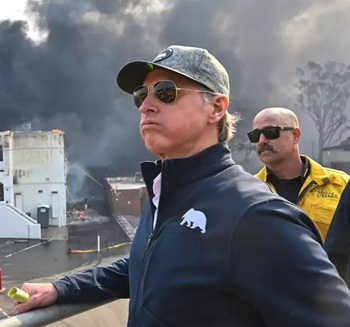 Multiple fires burned in Los Angeles County on Wednesday, prompting evacuation orders and warnings for thousands of residents. Five people have died since the brush fires first broke on Tuesday, the Los Angeles County Sheriff’s Department said. As southern California faced an unprecedented string of fires, firefighters reported on internal radio systems that they were short on hydrants and water, the Los Angeles Times reported. This comes as the Palisades Fire forced evacuation of at least 30,000 residents in northwest Los Angeles. Massive fires were also reported in Eaton, Hurst, Lidia and Woodley. The Delta Smelt controversy revolves around protection measures for a tiny fish native to the Sacramento-San Joaquin Delta. Environmental regulations aimed at protecting the Delta Smelt have led to restrictions on pumping water from the Delta to Central and Southern California. This has affected water availability for agriculture, urban areas, and industry. more, >>CLICK TO READ<< 10:12
Multiple fires burned in Los Angeles County on Wednesday, prompting evacuation orders and warnings for thousands of residents. Five people have died since the brush fires first broke on Tuesday, the Los Angeles County Sheriff’s Department said. As southern California faced an unprecedented string of fires, firefighters reported on internal radio systems that they were short on hydrants and water, the Los Angeles Times reported. This comes as the Palisades Fire forced evacuation of at least 30,000 residents in northwest Los Angeles. Massive fires were also reported in Eaton, Hurst, Lidia and Woodley. The Delta Smelt controversy revolves around protection measures for a tiny fish native to the Sacramento-San Joaquin Delta. Environmental regulations aimed at protecting the Delta Smelt have led to restrictions on pumping water from the Delta to Central and Southern California. This has affected water availability for agriculture, urban areas, and industry. more, >>CLICK TO READ<< 10:12Local fishermen fight for survival and infrastructure in changing San Diego waters
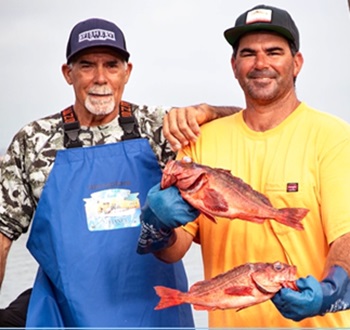 In the early morning hours, as most San Diegans prepare for their daily commute, Mario and Jordan Souza set out on a different kind of journey. The father-son duo boards their boat, the Extremis, to continue a family tradition that spans generations. “Welcome to the office,” Mario says as he gestures to their vessel and the vast expanse of the Pacific Ocean stretching out before them. The Souza’s story is about resilience, adaptability, and a deep-rooted passion for the sea. Jordan, who started in the fishing industry at the age of eleven, recalls his father taking him fishing as a toddler. They come from three generations of fishermen and remember the glory days of San Diego’s fishing industry well. Photos, Video, more, >>CLICK TO READ<< 09:09
In the early morning hours, as most San Diegans prepare for their daily commute, Mario and Jordan Souza set out on a different kind of journey. The father-son duo boards their boat, the Extremis, to continue a family tradition that spans generations. “Welcome to the office,” Mario says as he gestures to their vessel and the vast expanse of the Pacific Ocean stretching out before them. The Souza’s story is about resilience, adaptability, and a deep-rooted passion for the sea. Jordan, who started in the fishing industry at the age of eleven, recalls his father taking him fishing as a toddler. They come from three generations of fishermen and remember the glory days of San Diego’s fishing industry well. Photos, Video, more, >>CLICK TO READ<< 09:09
Investigators at San Francisco pier find fake wall hiding illegal fish
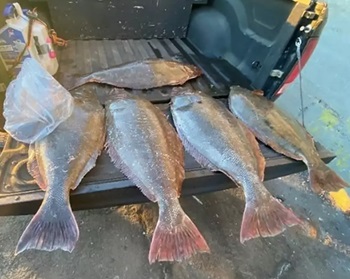 A commercial fisherman was busted in San Francisco for attempting to hide thousands of pounds of illegally caught fish, the California Department of Fish and Wildlife announced last week. Investigators from the department witnessed the angler unloading burlap sacks of fish from a trawler docked at Pier 45, a historic pier that’s home to the Musée Mécanique and USS Pampanito. CDFW said the angler was tailed to an unspecified restaurant, where they “attempted to flee and hide fish.” When investigators probed the owner’s trawler, they allegedly discovered a fake wall. “Behind the false wall were fillets of salmon,” a news release from the California Statewide Law Enforcement Association said. more, >>CLICK TO READ<< 10:33
A commercial fisherman was busted in San Francisco for attempting to hide thousands of pounds of illegally caught fish, the California Department of Fish and Wildlife announced last week. Investigators from the department witnessed the angler unloading burlap sacks of fish from a trawler docked at Pier 45, a historic pier that’s home to the Musée Mécanique and USS Pampanito. CDFW said the angler was tailed to an unspecified restaurant, where they “attempted to flee and hide fish.” When investigators probed the owner’s trawler, they allegedly discovered a fake wall. “Behind the false wall were fillets of salmon,” a news release from the California Statewide Law Enforcement Association said. more, >>CLICK TO READ<< 10:33
SF firm specializes in the freshest California fish caught via small boats
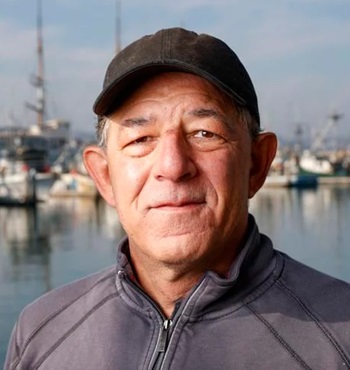 The recent postponing of the 2024 commercial crab season off the central California coast, now set to open with catch restrictions on Jan. 5, highlighted anew how vital it has been for the Water2Table Fish Co. on San Francisco’s Fisherman’s Wharf to remain flexible. Being adaptable is essential given Water2Table’s mission of buying seasonal, sustainably harvested fish pulled from the waters off the California coast by a stable of 15 to 20 small-boat operators, said Joe Conte, who founded the business with his wife in 2011. “It’s a very dynamic business,” Conte said. “We’re dealing with a wild product and getting it into people’s homes and restaurants. It’d be like somebody placing a meat order, and the vendor has to go out and shoot it.” more, >>CLICK TO READ<< 06:40
The recent postponing of the 2024 commercial crab season off the central California coast, now set to open with catch restrictions on Jan. 5, highlighted anew how vital it has been for the Water2Table Fish Co. on San Francisco’s Fisherman’s Wharf to remain flexible. Being adaptable is essential given Water2Table’s mission of buying seasonal, sustainably harvested fish pulled from the waters off the California coast by a stable of 15 to 20 small-boat operators, said Joe Conte, who founded the business with his wife in 2011. “It’s a very dynamic business,” Conte said. “We’re dealing with a wild product and getting it into people’s homes and restaurants. It’d be like somebody placing a meat order, and the vendor has to go out and shoot it.” more, >>CLICK TO READ<< 06:40
People We Meet: Frankie Gaetano Balistreri, owner of Portofino’s in North Beach
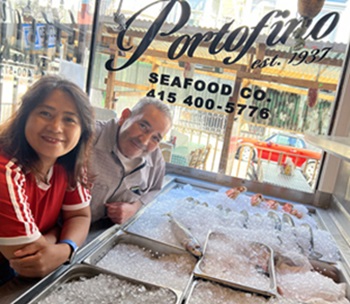 Frankie is short and barrel-chested, with powerful forearms and a charming, lopsided grin. He talks fast, his deep brown eyes glint with humor, and he often cracks himself up. Under his big apron, his T-shirt reads: When You See Frankie, Call the Cops. The 64-year-old proprietor (with his wife, Evelyn) of the popular Portofino’s Restaurant on Grant Avenue is beloved in his North Beach community where everyone assumes he was born. But he was born in Rosarito Beach, Tijuana, Mexico, where his Sicilian father fled after getting in trouble over contraband at the port of Palermo. Frankie’s mother found his father 13 years later on the streets in Mexico City, he said. “She forgave a lot!” Photos, more, >>CLICK TO READ<< 10:38
Frankie is short and barrel-chested, with powerful forearms and a charming, lopsided grin. He talks fast, his deep brown eyes glint with humor, and he often cracks himself up. Under his big apron, his T-shirt reads: When You See Frankie, Call the Cops. The 64-year-old proprietor (with his wife, Evelyn) of the popular Portofino’s Restaurant on Grant Avenue is beloved in his North Beach community where everyone assumes he was born. But he was born in Rosarito Beach, Tijuana, Mexico, where his Sicilian father fled after getting in trouble over contraband at the port of Palermo. Frankie’s mother found his father 13 years later on the streets in Mexico City, he said. “She forgave a lot!” Photos, more, >>CLICK TO READ<< 10:38
Governor Newsom requests federal fishery disaster relief to support albacore fishing industry
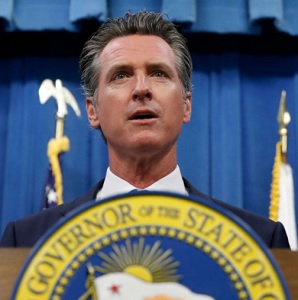 Today, Governor Gavin Newsom announced a request for a federal fishery disaster declaration to support the albacore fishing industry. Last year marked the worst season for the West Coast North Pacific pole and troll albacore fishery in over 30 years. The California albacore fishery declined 71% in volume and 65% in value. Recognizing the importance of albacore to California’s commercial fisheries, Governor Newsom joined the governors of Washington and Oregon and submitted the request to U.S. Secretary of Commerce Gina Raimondo. If approved, the federal fishery disaster declaration would begin the process of providing needed relief to fishing communities financially impacted by the decline in albacore fishing. links, more, >>CLICK TO READ<< 18:36
Today, Governor Gavin Newsom announced a request for a federal fishery disaster declaration to support the albacore fishing industry. Last year marked the worst season for the West Coast North Pacific pole and troll albacore fishery in over 30 years. The California albacore fishery declined 71% in volume and 65% in value. Recognizing the importance of albacore to California’s commercial fisheries, Governor Newsom joined the governors of Washington and Oregon and submitted the request to U.S. Secretary of Commerce Gina Raimondo. If approved, the federal fishery disaster declaration would begin the process of providing needed relief to fishing communities financially impacted by the decline in albacore fishing. links, more, >>CLICK TO READ<< 18:36
In the Pacific Northwest, killing sea lions is a necessity
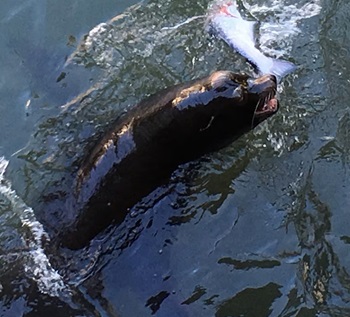 Don’t let their adorable faces and playful personalities fool you: California and Steller sea lions are capable of having disastrous impacts on nonnative ecosystems. In places like the Columbia River Gorge, these so-called dogs of the sea have been encroaching on native fish habitats for decades. Making homes in the Pacific, in coastal areas like the beaches of California, Alaska and Japan, these sea lions especially thrive on the West Coast, where population numbers are estimated to have grown from 75,000 to 257,000 in the last 30 years. This population boom has meant increased nutritional needs, sending thousands of sea lions inland in search of prey. One of the easiest targets for sea lions is the Columbia River, one of North America’s largest rivers and a key migration route for North American fish. The picturesque river valley abounds with seafood, including 13 federally protected species. more, >>CLICK TO READ<< 10:12
Don’t let their adorable faces and playful personalities fool you: California and Steller sea lions are capable of having disastrous impacts on nonnative ecosystems. In places like the Columbia River Gorge, these so-called dogs of the sea have been encroaching on native fish habitats for decades. Making homes in the Pacific, in coastal areas like the beaches of California, Alaska and Japan, these sea lions especially thrive on the West Coast, where population numbers are estimated to have grown from 75,000 to 257,000 in the last 30 years. This population boom has meant increased nutritional needs, sending thousands of sea lions inland in search of prey. One of the easiest targets for sea lions is the Columbia River, one of North America’s largest rivers and a key migration route for North American fish. The picturesque river valley abounds with seafood, including 13 federally protected species. more, >>CLICK TO READ<< 10:12
California Dungeness crab opening date announced
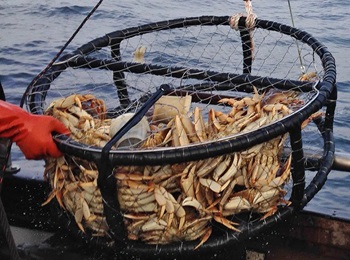 The California Department of Fish and Wildlife announced Friday it will open the commercial Dungeness crab fishery from the Sonoma/Mendocino County line to the U.S./Mexico border starting on Jan. 5. A pre-soak when crab pots can be baited in the water will begin at 8:01 a.m. Jan. 2 before the fishery opens at 12:01 a.m. on Jan. 5. This area (Fishing Zones 3, 4, 5 and 6) will be subject to a 50 percent trap reduction. The trap reduction is expected to reduce entanglement risk for humpback whales by decreasing the amount of gear and vertical lines in the water. The Dungeness crab season in the Northern Management Area (Zones 1 and 2, California/Oregon Border to the Sonoma/Mendocino County line) will be further delayed due to the inability to conduct industry-sponsored meat quality testing. more, >>CLICK TO READ<< 06:33
The California Department of Fish and Wildlife announced Friday it will open the commercial Dungeness crab fishery from the Sonoma/Mendocino County line to the U.S./Mexico border starting on Jan. 5. A pre-soak when crab pots can be baited in the water will begin at 8:01 a.m. Jan. 2 before the fishery opens at 12:01 a.m. on Jan. 5. This area (Fishing Zones 3, 4, 5 and 6) will be subject to a 50 percent trap reduction. The trap reduction is expected to reduce entanglement risk for humpback whales by decreasing the amount of gear and vertical lines in the water. The Dungeness crab season in the Northern Management Area (Zones 1 and 2, California/Oregon Border to the Sonoma/Mendocino County line) will be further delayed due to the inability to conduct industry-sponsored meat quality testing. more, >>CLICK TO READ<< 06:33
Tension grows among Bay Area crab fishermen to find whale-safe alternative crabbing methods
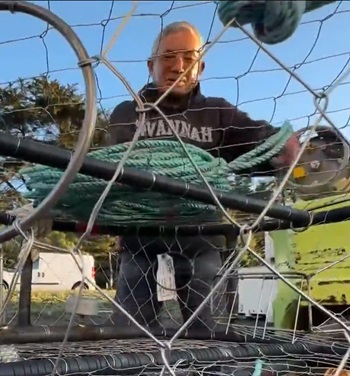 State regulators say the prevalence of marine life including humpback whales is too high for crab fishing to begin. Now there’s a growing tension among crab fishermen about alternative methods of whale-safe fishing to offset the losses of increasingly shortened seasons. Dick Ogg is a crab fisherman who also spends countless hours driving up and down the coast, advocating for others in the business without getting paid. Fishing is in the 72-year-old’s veins. Between calls with regulators and industry decision makers, Ogg prepares his own crab pots, employing just two deckhands who work in the side-yard of his home to save costs. But the Bodega Bay resident is concerned about a years-long push to promote high-tech “pop-up” fishing gear as the solution for whale-safe harvesting in the spring after the season ends. Video, more, >>CLICK TO READ<< 09:26
State regulators say the prevalence of marine life including humpback whales is too high for crab fishing to begin. Now there’s a growing tension among crab fishermen about alternative methods of whale-safe fishing to offset the losses of increasingly shortened seasons. Dick Ogg is a crab fisherman who also spends countless hours driving up and down the coast, advocating for others in the business without getting paid. Fishing is in the 72-year-old’s veins. Between calls with regulators and industry decision makers, Ogg prepares his own crab pots, employing just two deckhands who work in the side-yard of his home to save costs. But the Bodega Bay resident is concerned about a years-long push to promote high-tech “pop-up” fishing gear as the solution for whale-safe harvesting in the spring after the season ends. Video, more, >>CLICK TO READ<< 09:26
California expands test of traps to help delayed Bay Area crabbing season: What this means for crabbers
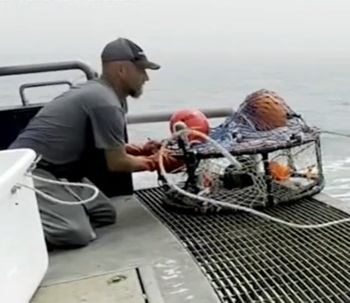 For fisherman Brand Little, the specialized ropes connecting his crab traps are a financial lifeline. The experimental “pop-up” system is designed to prevent whales from getting entangled, by keeping lines on the ocean floor until a crew launches them by remote control to reel in the traps. And thanks to a special testing permit, he’s been able to fish into the spring crabbing season, which was cut-short several years ago to protect the migrating whales. “This is a tipping point, and I can’t stress this enough. This is a tipping point at getting our spring fishery back. It’s been six years. You know, you got to look at where we came from, where we’re at and where we’re headed,” said Brand Little. Video, more, >>CLICK TO READ<< 09:57
For fisherman Brand Little, the specialized ropes connecting his crab traps are a financial lifeline. The experimental “pop-up” system is designed to prevent whales from getting entangled, by keeping lines on the ocean floor until a crew launches them by remote control to reel in the traps. And thanks to a special testing permit, he’s been able to fish into the spring crabbing season, which was cut-short several years ago to protect the migrating whales. “This is a tipping point, and I can’t stress this enough. This is a tipping point at getting our spring fishery back. It’s been six years. You know, you got to look at where we came from, where we’re at and where we’re headed,” said Brand Little. Video, more, >>CLICK TO READ<< 09:57






 A fishing vessel that was built during the Monterey Bay’s sardine boom and made famous by a Nobel Prize-winning author will return to the site of its former glory after 85 years. The Western Flyer, a state-of-the-art purse seiner when it was built in 1937, was chartered by John Steinbeck and his marine biologist friend, Ed “Doc” Ricketts, for a six-week expedition that would be immortalized in the “Sea of Cortez: A Leisurely Journal of Travel and Research.” Fully renovated to its original specifications and updated with cutting-edge technology, including a hybrid diesel-electric engine and science lab, the Western Flyer will return to the Gulf of California and retrace Steinbeck’s and Ricketts’ groundbreaking journey of discovery. 18 photos,
A fishing vessel that was built during the Monterey Bay’s sardine boom and made famous by a Nobel Prize-winning author will return to the site of its former glory after 85 years. The Western Flyer, a state-of-the-art purse seiner when it was built in 1937, was chartered by John Steinbeck and his marine biologist friend, Ed “Doc” Ricketts, for a six-week expedition that would be immortalized in the “Sea of Cortez: A Leisurely Journal of Travel and Research.” Fully renovated to its original specifications and updated with cutting-edge technology, including a hybrid diesel-electric engine and science lab, the Western Flyer will return to the Gulf of California and retrace Steinbeck’s and Ricketts’ groundbreaking journey of discovery. 18 photos,  The sharp bang of an auctioneer’s gavel, due to sound Thursday, Feb. 13, in Berkeley, California, could echo locally. A Wauna man seems a bit anxious. He’s nursing a years-long emotional tie to the formerly junk-piled maritime items for sale, not to mention a financial stake in the auction outcome. “I’m on pins and needles,” Michael Hemp told Gig Harbor Now last week. A Northern California man, the original salvager and owner of the items for the last 49 years, has a lesser emotional tie to the relics. But he maintains hopeful anticipation for a far bigger slice of a potential cash pie. Because the objects Fry, then a teenager, rescued from a scrap heap in Alaska are original parts of the “Western Flyer,” perhaps the most famous fishing boat in the world. Photos,
The sharp bang of an auctioneer’s gavel, due to sound Thursday, Feb. 13, in Berkeley, California, could echo locally. A Wauna man seems a bit anxious. He’s nursing a years-long emotional tie to the formerly junk-piled maritime items for sale, not to mention a financial stake in the auction outcome. “I’m on pins and needles,” Michael Hemp told Gig Harbor Now last week. A Northern California man, the original salvager and owner of the items for the last 49 years, has a lesser emotional tie to the relics. But he maintains hopeful anticipation for a far bigger slice of a potential cash pie. Because the objects Fry, then a teenager, rescued from a scrap heap in Alaska are original parts of the “Western Flyer,” perhaps the most famous fishing boat in the world. Photos,  The historic Western Flyer will return to the Gulf of California this spring, marking 85 years since the famous expedition with John Steinbeck, Ed Ricketts and their crew. Local scientists, educators and conservationists will team up to study the Gulf of California’s ecosystems, exchange knowledge and brainstorm new ideas to protect the marine world. The expedition starts at 3 p.m. March 16, departing from Old Fisherman’s Wharf. The send-off celebration will mark nearly 85 year to the day since the now-famous journey that inspired the book ‘Sea of Cortez. ’
The historic Western Flyer will return to the Gulf of California this spring, marking 85 years since the famous expedition with John Steinbeck, Ed Ricketts and their crew. Local scientists, educators and conservationists will team up to study the Gulf of California’s ecosystems, exchange knowledge and brainstorm new ideas to protect the marine world. The expedition starts at 3 p.m. March 16, departing from Old Fisherman’s Wharf. The send-off celebration will mark nearly 85 year to the day since the now-famous journey that inspired the book ‘Sea of Cortez. ’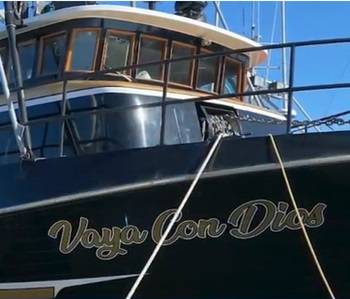



























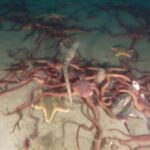
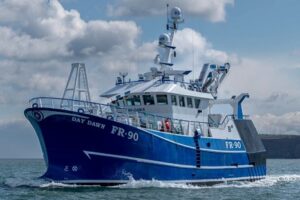
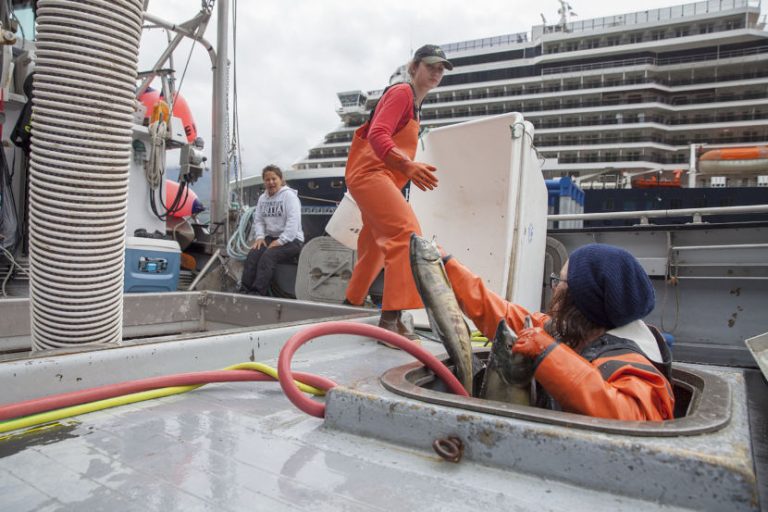
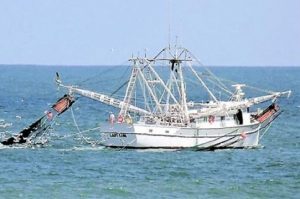
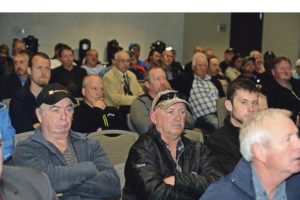
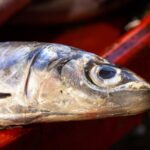
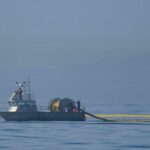
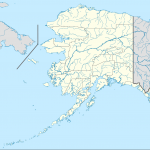

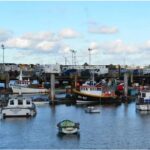
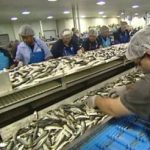
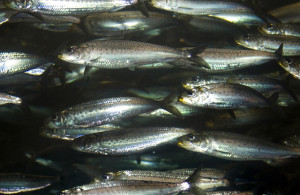



CFACT Comments on the California Offshore Wind Draft Programmatic Environmental Impact Statement (PEIS)
Share this post